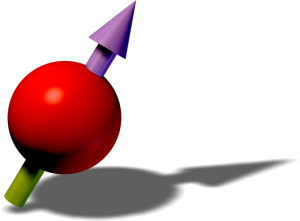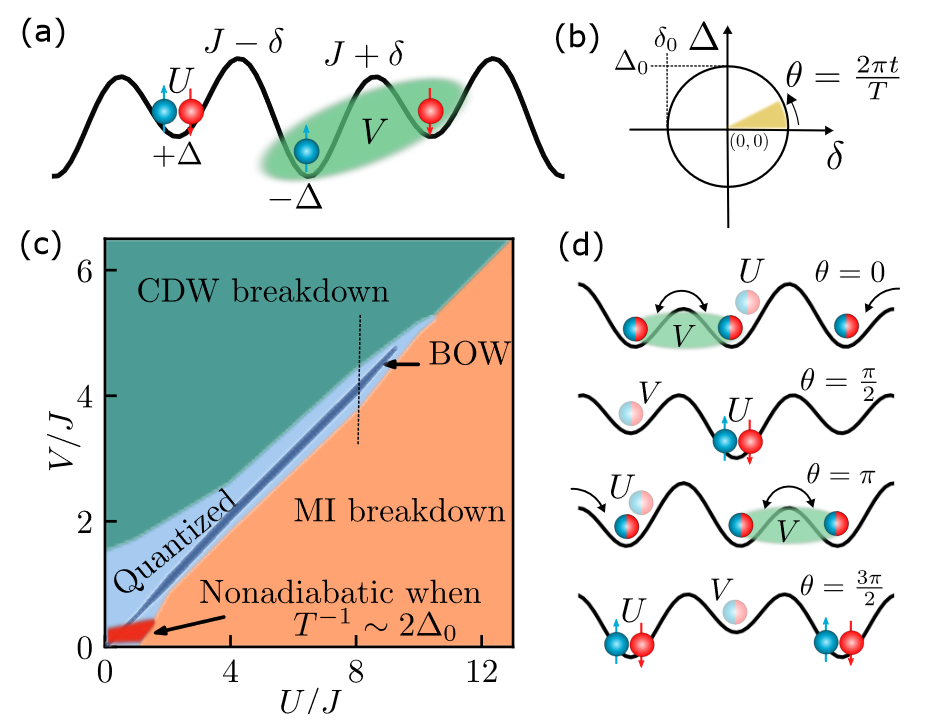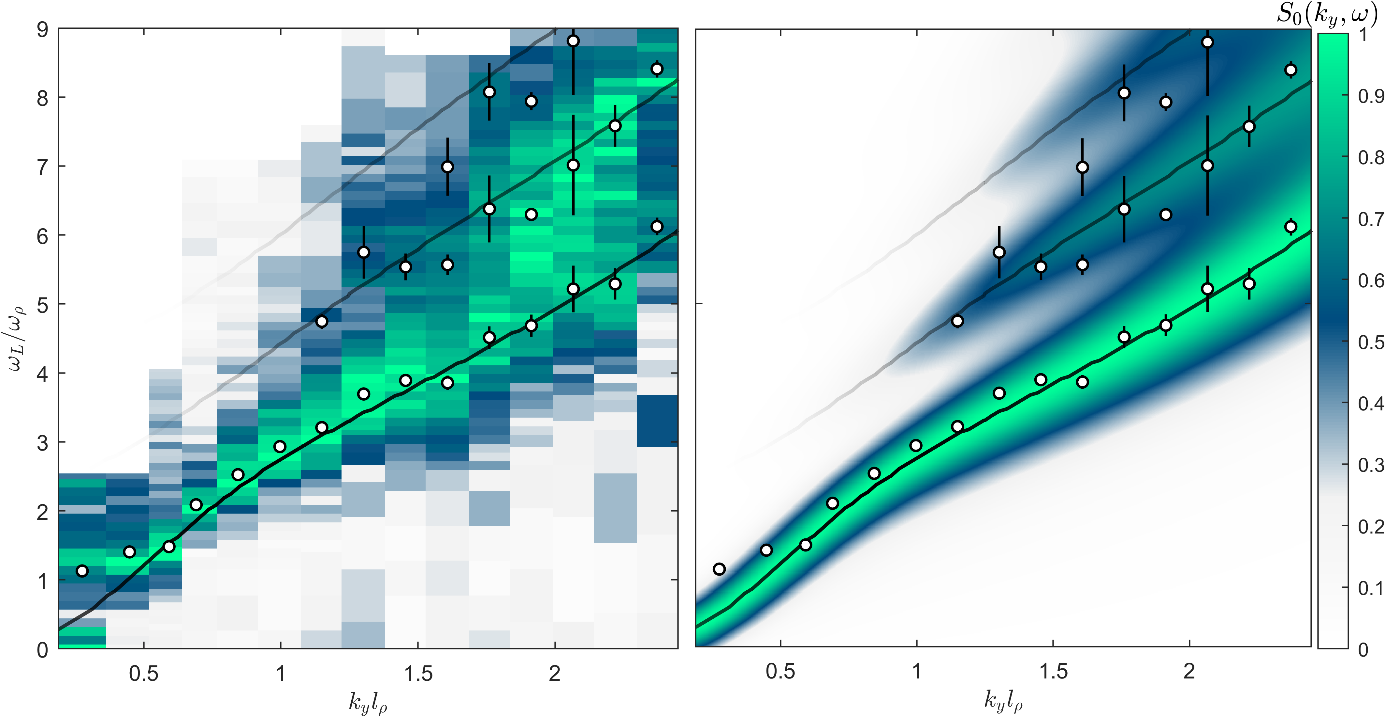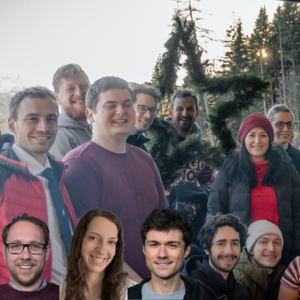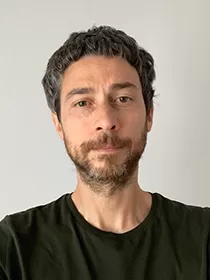Thouless pumping represents a powerful concept to probe quantized topological invariants in quantum systems. We explore this mechanism in a generalized Rice-Mele Fermi-Hubbard model characterized by the presence of competing onsite and intersite interactions. While large on-site repulsion leads to a breakdown of quantized pumping , sufficiently large intersite interactions allow for an interaction-induced recovery of Thouless pumps. The stable topological transport at large interactions is connected to the presence of a spontaneous bond-order-wave in the ground-state phase diagram of the model. We also discuss a concrete experimental setup based on ultracold magnetic atoms in an optical lattice.
The article can be found here: Quantum, the pre-print can be accessed here: arXiv
 Manfred Mark
Manfred Mark
A very excited dipolar quantum droplet
Now published in PRL! Together with collaborators from the University of Otago, we present the the excitation spectrum of Erbium at the crossover from a Bose-Einstein condensate to a trapped macrodroplet. The measurements coincide well with the predictions and confirm the peculiar features of this spectrum: a strong upward shift in energy at low momentum and the appearance of multiple excitation branches at higher momentum. It turns out that these features can be explained by the tendency of the excitations to avoid the central dense part of the droplet and by becoming more like ripples moving over the surface of a droplet!
Read it in Physical Review Letters, Phys. Rev. Lett. 132, 103401, and see the pre-print here: arXiv:2308.00003.
Christmas celebration
Our team participated at the christmas celebration of the Institute, this time at a hut above Innsbruck!
A Thouless pump with dipolar interactions
Thouless pumping represents a powerful concept to probe quantized topological invariants in quantum systems. We explore this mechanism in a generalized Rice-Mele Fermi-Hubbard model characterized by the presence of competing onsite and intersite interactions. While large on-site repulsion leads to a breakdown of quantized pumping , sufficiently large intersite interactions allow for an interaction-induced recovery of Thouless pumps. The stable topological transport at large interactions is connected to the presence of a spontaneous bond-order-wave in the ground-state phase diagram of the model. We also discuss a concrete experimental setup based on ultracold magnetic atoms in an optical lattice.
The pre-print can be accessed here: arXiv
A ship-in-a-bottle quantum gas microscope
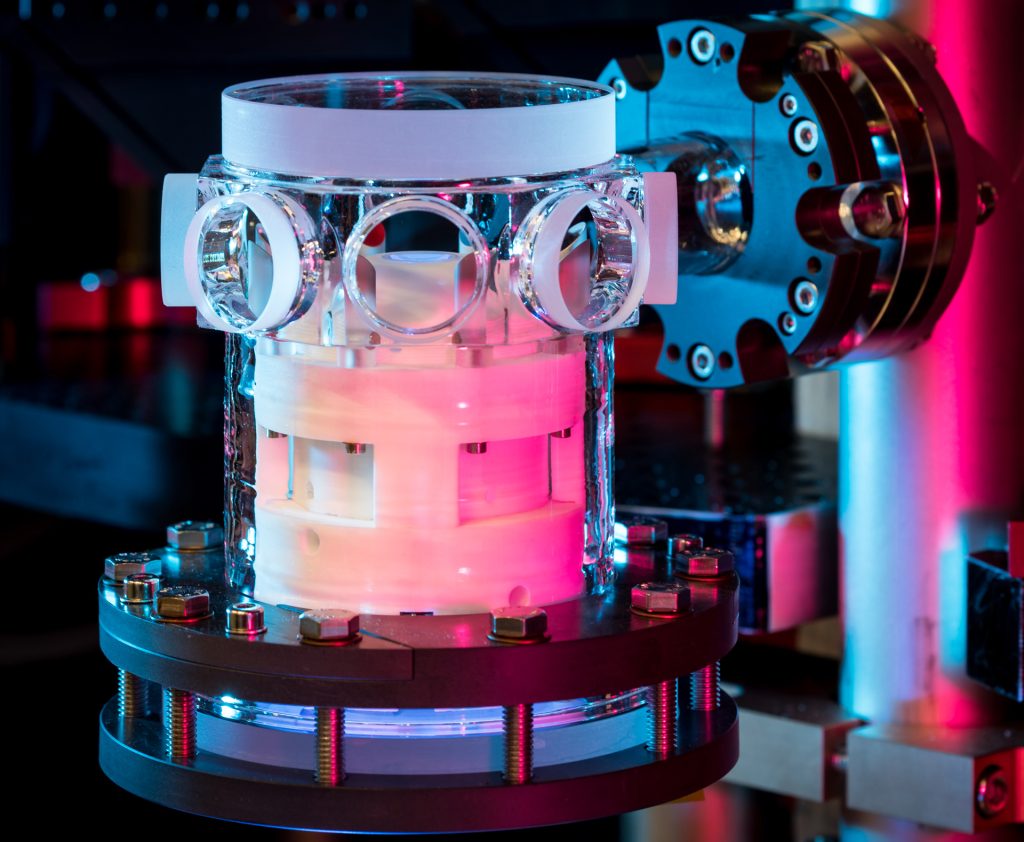
Quantum gas microscopes are versatile and powerful tools to investigate lattice systems down to the single atom level. Here we present a quantum gas microscopy setup for experiments with highly magnetic atoms of the lanthanoid elements erbium and dysprosium. Our setup features a quartz glass cell, enclosed by a compact multi-shell ferromagnetic shield. Inside, a non-magnetic, non-conducting, large-working-distance, high-numerical-aperture, in-vacuum microscope objective will enable single-site imaging of our strongly dipolar atomic mixture.
See the pre-print here: arXiv:2306.05404
LFUI Guest Professorship granted
Luca Barbiero
Politecnico di Torino, Italy
Our group is very happy to announce that Dr. Luca Barbiero, currently Asssistent Professor at Politecnico di Torino, will visit us for a LFUI Guest Professorship for two months during October and November 2023. During his stay we will together work on new ideas on how to use our experimental dipolar platforms for the quantum simulation of Bose- and Fermi-Hubbard models with strong dipolar interactions. He will also give a special lecture on equilibrium and out-of-equilibrium properties of dipolar lattice systems to interested Master- and PhD-students.
